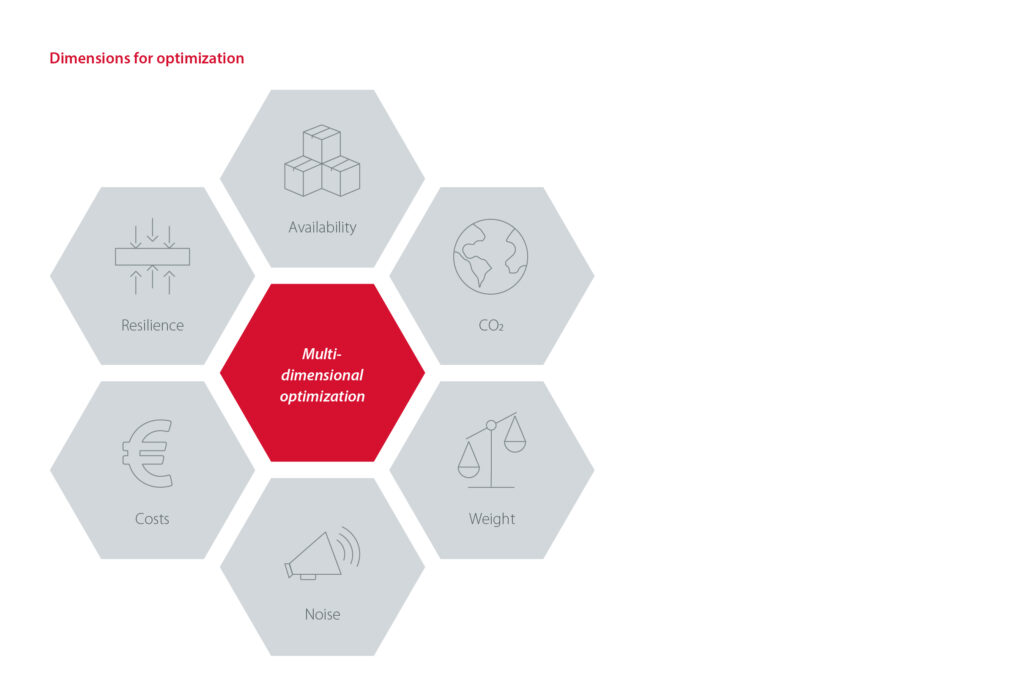Optimizing the overall profitability by including additional variables
From the company’s perspective, it is not only important to optimize material costs, but also to address other types of costs, such as tool costs, supplier development costs or investments in production equipment. There is also an increasing focus on non-monetary target figures, currently primarily the CO2 footprint of a product and sustainability.
These target variables cannot be optimized independently of each other, e.g. reduced investment in automation often leads to higher manual assembly costs. Reduced CO2 emissions, which can be achieved through the use of regranulated plastics or “green” steel, for example, often have the opposite effect on costs.
The solution here is to first evaluate all the target variables to be considered in monetary terms and normalize them to a common denominator (usually a reference product). In a next step, all optimization ideas are then mapped in a morphological box and the combination(s) that meet all fixed constraints are identified. An evaluation of the total cost of ownership (TCO) can then be carried out for the viable solution paths identified. The evaluation should also include secondary effects, such as those resulting from the avoidance of CO2 emissions, which allow the purchase of CO2 certificates to be avoided. Increased flexibility in supplier selection and the associated increase in resilience also belong in this category.

Project results
- Objective evaluation of other targets
- Individual cost model
- Decisions which take all effects into account
